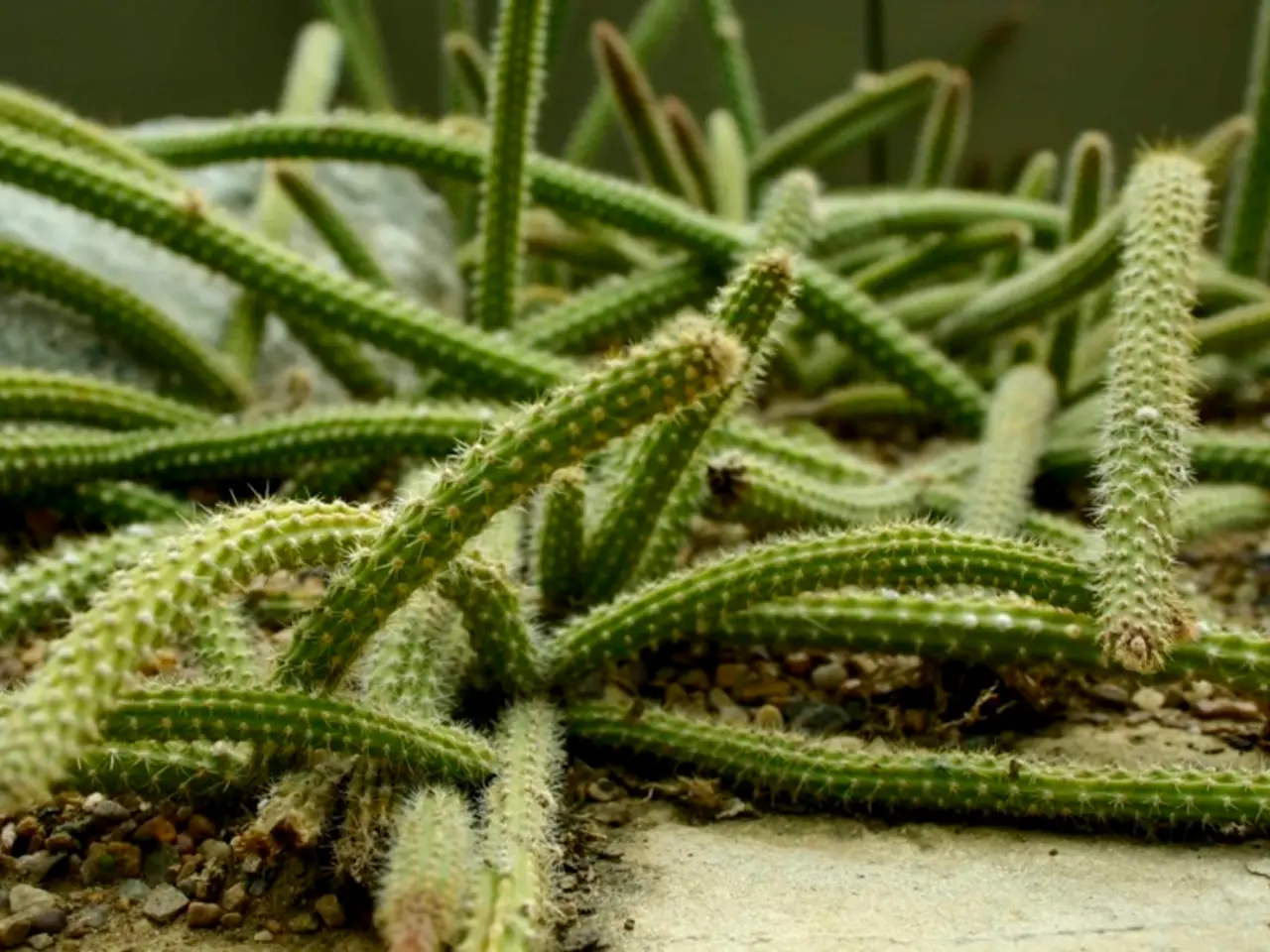Nurturing Adenium Flowers: A Guide to Desert Rose Maintenance
Caring for an Adenium, also known as the Desert Rose, requires a keen understanding of its specific needs to ensure its growth and blooming. Here's a comprehensive guide to help you nurture your Desert Rose successfully.
Lighting
Position your Desert Rose near a sunny windowsill, ideally south-facing. However, direct sunlight through a south-facing window can be intense, so consider using a sheer curtain to filter the light during peak hours.
Watering
Keep the soil moderately moist during the active growing season (spring and summer). Water thoroughly when the soil is dry or mostly dry. Reduce watering significantly during fall and winter when the plant is dormant to prevent root rot.
Soil
Use a well-draining soil mix. A combination of cactus soil with gritty sand or lava rocks is ideal for preventing waterlogged soil and root rot.
Fertilization
Fertilize with a 20-20-20 liquid plant food diluted by half once per month during the active growing season (spring and summer). Avoid fertilizing during the winter months.
Pest Control
Regularly check for pests like scale, mealybugs, and spider mites. Use cotton balls soaked in alcohol to gently remove these insects.
Temperature and Repotting
Desert Roses prefer warmer temperatures, typically between 65°F to 90°F (18°C to 32°C), but they can tolerate a bit cooler temperatures indoors. Repot every few years when necessary, using a slightly larger pot to accommodate the plant's growth. Avoid repotting during the active flowering period to prevent stress.
Other Considerations
- The best time to plant desert rose seeds is in spring. The resulting plants will not be true to either parent.
- There are several varieties of desert rose plants, including Adenium multiflorum, Adenium swazicum, Adenium boehmianum, Adenium obesum, Adenium arabicum, and Adenium socotranum.
- More experienced gardeners might want to try grafting, which can result in a whole new cultivar.
- Adenium plants require 2 clones to develop a viable seed. Outdoor plants can pollinate through pollinating insects, but are tricky to pollinate by hand.
- Desert rose plants are native to sub-Saharan Africa and Saudi Arabia.
- The botanical name of the desert rose plant is Adenium obesum.
- Desert rose plants are hardy in USDA zones 10-11.
- During winter months, desert rose plants need little to no water, although young plants should be kept moist.
- Desert rose flowers are pink, red, and white, often bicolored, and have 5 petals. New hybrids have been developed that boast flowers of purple, yellow, and orange.
By following these tips, you can create an ideal indoor environment for your Adenium (Desert Rose) to thrive. Happy gardening!
[1] Gardening Know How [2] The Spruce [3] HGTV [4] The Desert Rose Society [5] The Balcony Garden Web
Maintaining a healthy lifestyle for your home-and-garden, specifically your Desert Rose, includes providing it with a well-draining soil mix for better root health, regular fertilization during the active growing season, and diligent pest control to ensure its growth and blooming. Additionally, implementing gardening techniques such as grafting could lead to the creation of unique Desert Rose cultivars.




